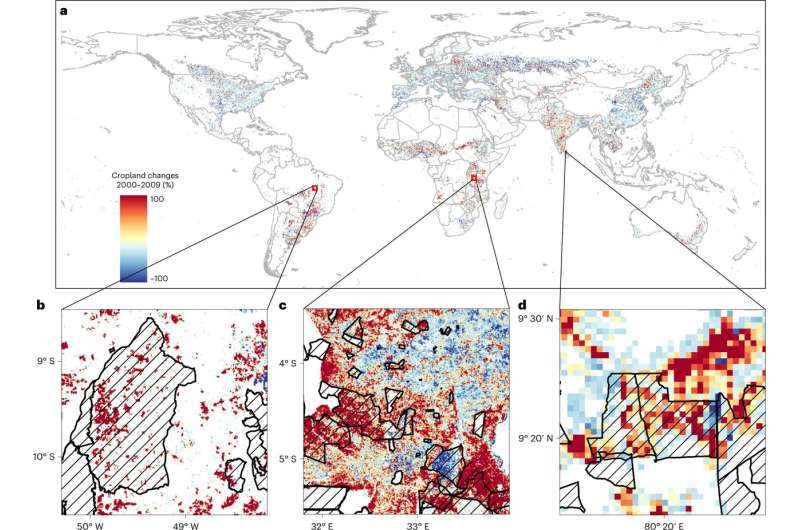Protected areas (PAs) are essential for biodiversity conservation but are threatened by cropland expansion. Recent studies predicted that approximately 500 million ha of additional croplands will be required in 2050 to address global food demand, which will increase pressure on natural habitats.
Previous studies found that, globally, cropland encroached on 6% of the PAs in 2013 and expanded more in global PAs than in unprotected areas from 1990 to 2005. However, the dynamics, effectiveness, and drivers of cropland expansion in PAs in different regions during the past 20 years are still unclear.
Now, a research team led by Prof. Dong Jinwei from the Institute of Geographic Sciences and Natural Resources Research of the Chinese Academy of Sciences (CAS) and their cooperators have revealed the accelerated cropland expansion in global PAs in the past 20 years, thus favoring a better understanding of human activities in PAs.
This work was published in Nature Sustainability on March 23.
The researchers mainly used the 30-m spatial resolution cropland data layers to characterize cropland dynamics of PAs over the past 20 years at the global scale. They also assessed the potential effects of cropland expansion on biodiversity by overlapping cropland dynamics and species extinction risks in PAs.
The results showed that the cropland expansion in PAs accelerated dramatically from 2000 to 2019 compared to that of global croplands. The areal expansion was mainly observed in large, less-strict, and Afrotropical PAs—regions with higher species extinction risks.
Notably, cropland expansion was also found in some PAs with the highest conservation levels. “This new picture of cropland dynamics in PAs illustrates that cropland expansion is an ongoing intractable global conservation challenge that will impinge on the aspirations of the post-2020 global biodiversity framework,” said Prof. Dong.

